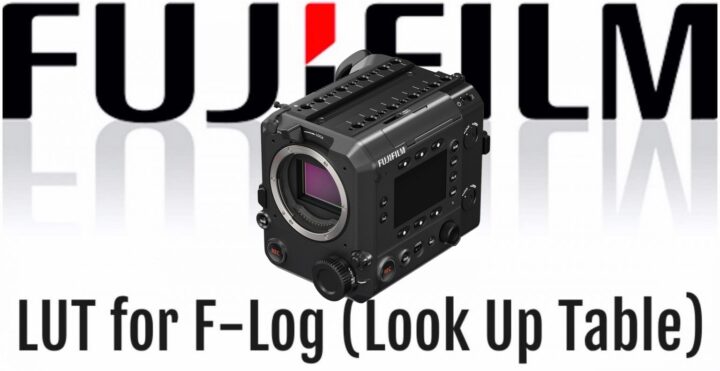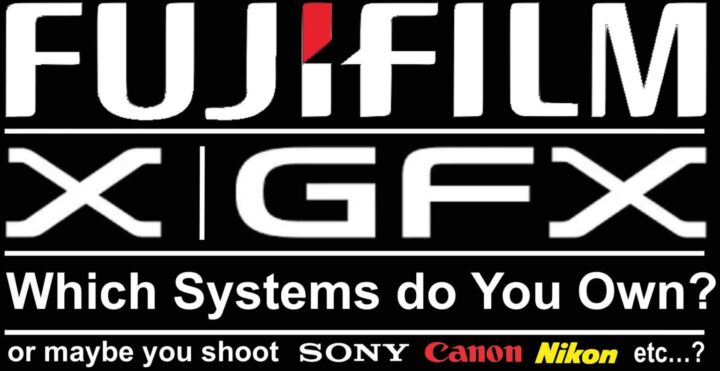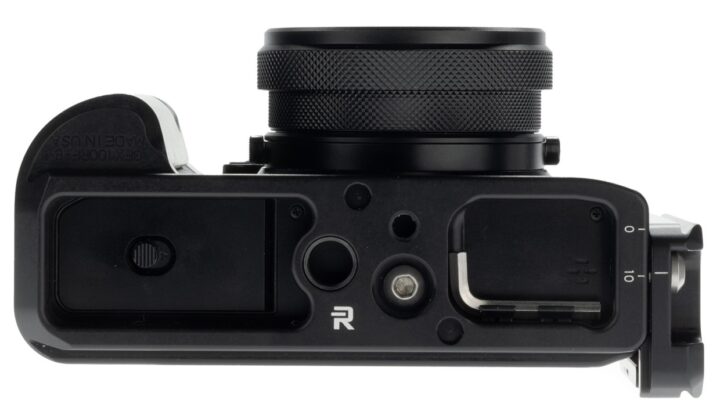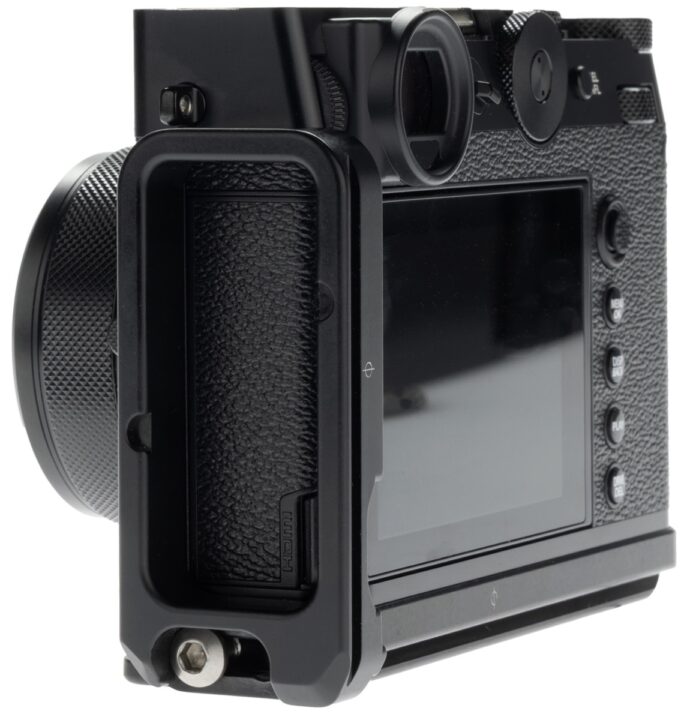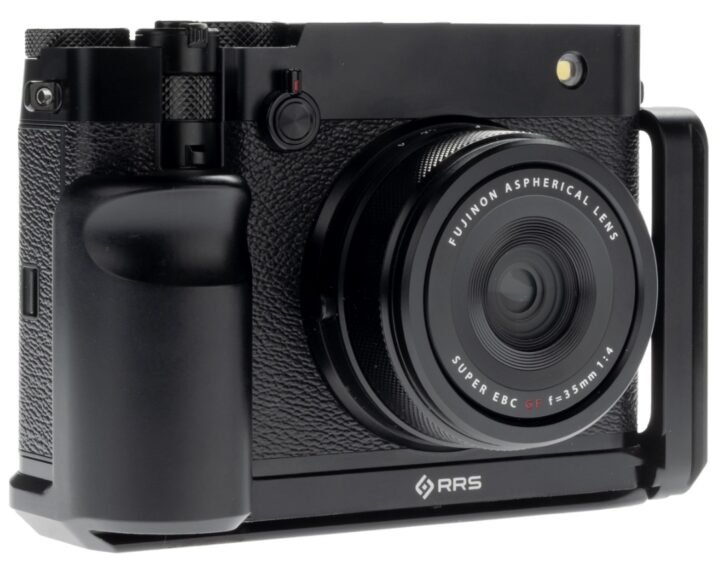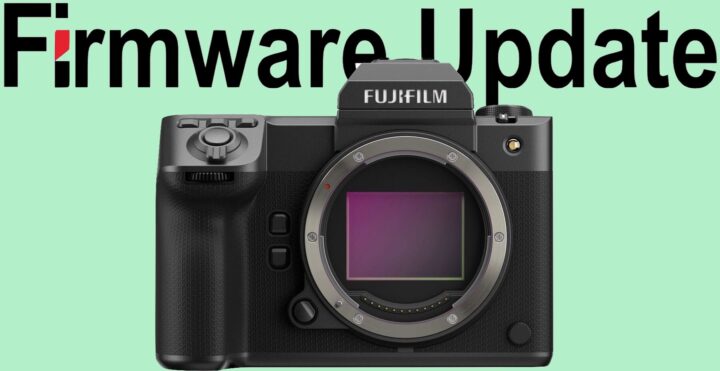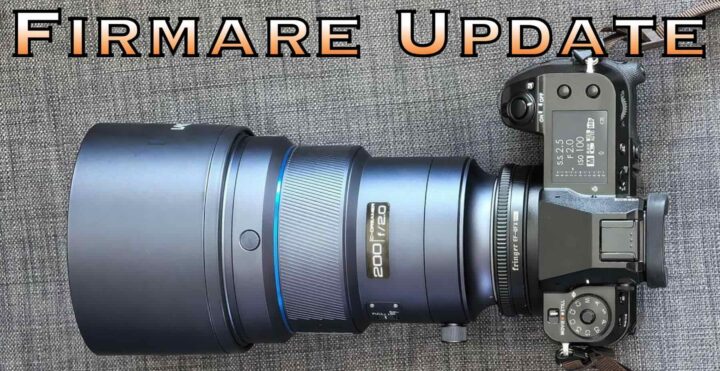Black Friday is Here – These are The Best Deals, from Fujifilm X/GFX, SmallRig, Software Savings & More
Black Friday is in full swing. Tons of deals have dropped, including huge rebates on X and GFX gear in USA.
- 👉 IMPORTANT: Fujifilm USA 🇺🇸 has launched HUGE DEALS on Fujifilm X and GFX gear
So, time to give you the complete overview:
- BHphoto Black Friday Page
- Amazon USA Black Friday Page
- Adorama Black Friday Page
- BestBuy Black Friday Page
- Amazon CA Black Friday Page
- Amazon DE Black Friday Page
- Amazon UK Black Friday Page
- Amazon IT Black Friday Page
- Amazon FR Black Friday Page
- Amazon ES Black Friday Page
- Amazon NL Black Friday Page
Here are the deals in detail for USA (a more detailed list for Europe can be found here).
Black Friday US/CA Deals by Brand/Store
at B&H Photo
- Save big on Fujifilm Related Gear
- Save big on Viltrox lenses for Fujfilm
- Save big on accessories from Smallrig for Fujifilm
- Save big on cards and storage from Sandisk, Lexar, Samsung, Western Digital, Seagate, Nextorage.
- Save big on Ugreen NAS and Ugreen products
- Save big on Anker products.
- Save big on Apple Products
at Amazon USA
- Save big on Fujifilm Related Gear
- Save big on Viltrox lenses for Fujfilm
- Save big on accessories from Smallrig for Fujifilm
- Save big on cards and storage from Sandisk, Lexar, Samsung, Western Digital, Seagate, Nextorage.
- Save big on Ugreen NAS and Ugreen products
- Save big on Anker products.
- Save big on Adobe software
- Save big on Apple Products
at Amazon CANADA
- Save big on Fujifilm Related Gear
- Save big on Viltrox lenses for Fujfilm
- Save big on accessories from Smallrig for Fujifilm
- Save big on cards and storage from Sandisk, Lexar, Samsung, Western Digital, Seagate, Nextorage.
- Save big on Ugreen NAS and Ugreen products
- Save big on Anker products.
- Save big on Adobe software
- Save big on Apple Products
at Adorama
- Adorama Black Friday Deals
– Adorama Black Friday Camera Accessories Deals
– Adorama Camera Black Friday Deals
– Adorama Black Friday Lens Deals
– Adorama Black Friday Computer Deals
– Adorama Black Friday Lighting Deals
– Adorama Black Friday Tripods and Supports Deals
– Adorama Black Friday Video Deals
– Adorama Black Friday Audio Deals
– Adorama Black Friday Home Theatre Deals
– Adorama Black Friday Drone Deals
Third Party Chinese Lenses
Chinese Third Party Lenses
(NOTE: Scroll further down for Sigma, Tamron, Tokina Deals)
- Viltrox Lenses – save 20%
BHphoto / Amazon / Adorama / ViltroxStore /Pergear - TTArtisan Lenses – save 20%
BHphoto / Amazon / Adorama / TTArtisan / Pergear - AstrHori Lenses
BHphoto / Amazon / Adorama / Pergear - 7Artisans for Fujifilm
Amazon
Storage Media Deals
SD-Cards + CFexpress Cards
- SanDisk SD-Cards
BHphoto / Amazon / Adorama - SanDisk CFexpress Type B Cards
BHphoto / Amazon / Adorama - Lexar Card Deals
BHphoto / Amazon / Adorama - Nextorage UHS-II and CFexpress Card Deals – save up to $120
BHphoto / Amazon / Adorama - ProGrade Digital UHS-II Cards
BHphoto / Amazon / Adorama - ProGrade Digital CFexpress Type B Cards
BHphoto / Amazon / Adorama
Vintage Flash
Godox
- Godox Lux Master Retro Camera Flash (with TTL) – save $49
BHphoto / Amazon / Adorama - Godox Lux Elf Retro Camera Flash – save $9
BHphoto / Amazon / Adorama - Godox Lux Cadet Retro Camera Flash – save $15
BHphoto / Amazon / Adorama - Godox Lux Senior Retro Camera Flash – save $19
BHphoto / Amazon / Adorama - Godox Lux Junior Retro Camera Flash – save $9
BHphoto / Amazon / Adorama
Viltrox
Software
- Luminar Neo Black Friday Deals – save up to 77%
- Topaz Black Friday Sale – save 43%
- Adobe Black Friday Offer – save 50%
Peak Design + Think Tank
- Peak Design Black Friday Sale
save 20-30% on most gear while stock lasts. Plus spend over $300 on Peak Design website and get a free mystery gift (a PD product valued at up to $100) - Think Tank Black Friday Deals
🇺🇸 Fujifilm X/GFX Deals in USA 🇺🇸
X Cameras
- X-T5 body – save $100
BHphoto / Amazon / Adorama / Moment / BestBuy - X-T50 body – save $100
BHphoto / Amazon / Adorama / Nuzira / Moment - X-T50 + XC15-45 – save $100
BHphoto / Amazon / Adorama - X-T50 + XF16-50 – save $100
BHphoto / Amazon / Adorama - X-S20 body – save $100
BHphoto / Amazon / Adorama / Moment / BestBuy - X-S20 + XC15-45 – save $100
BHphoto / Amazon / Adorama / Moment / BestBuy - X-S20 + XF16-50 – save $100
BHphoto / Amazon / Adorama / Moment / BestBuy
X Lenses
- XF18mmF1.4 R LM WR – save $100
BHphoto / Amazon / Adorama / Focuscamera - XF23mmF1.4 R LM WR – save $100
BHphoto / Amazon / Adorama / Focuscamera / Moment - XF 33mmF1.4 R LM WR – save $100
BHphoto / Amazon / Adorama / Focuscamera / Moment - XF 56mmF1.2 R WR – save $100
BHphoto / Amazon / Adorama / Moment - XF50-140mmF2.8 R LM OIS WR – save $200
BHphoto / Amazon / Adorama / Moment - XF 70-300mmF4-5.6 R LM OIS WR – save $100
BHphoto / Amazon / Adorama / Focuscamera / Moment - XF100-400mmF4.5-5.6 R LM OIS WR – save $400
BHphoto / Amazon / Adorama / Focuscamera - XF 150-600mmF5.6-8 R LM OIS WR – save $400
BHphoto / Amazon / Adorama / Moment
GFX Gear
- GF LENSES
- GF55mmF1.7 R WR – save $500
BHphoto / Amazon / Adorama - GF80mmF1.7 R WR – save $500
BHphoto / Amazon / Adorama / Focuscamera / Moment - GF110mmF2 R LM WR – save $500
BHphoto / Amazon / Adorama - GF20-35mmF4 R WR – save $500
BHphoto / Amazon / Adorama / Moment - GF45-100mmF4 R LM WR – save $500
BHphoto / Amazon / Adorama - GF100-200mmF5.6 R LM OIS WR – save $500
BHphoto / Amazon / Adorama / Moment / Paul’s Photo - CAMERA BUNDLES
- GFX100 II + GF 20-35mm f/4 – save $1,000
BHphoto (+ freebies*) / Amazon / Adorama - GFX100 II + GF 45-100mm f/4 – save $1,000
BHphoto (+ freebies*) / Amazon / Adorama - GFX100 II + GF 100-200mm f/5.6 – save $1,000
BHphoto (+ freebies*) / Amazon / Adorama - GFX100 II + GF 55mm f/1.7 – save $1,000
BHphoto (+ freebies*) / Amazon / Adorama - GFX100 II + GF110mm f/1.7 – save $1,000
BHphoto (+ accessories) / Amazon / Adorama - GFX100S II + GF 20-35mm f/4 – save $1,000
BHphoto (+ freebies*) / Amazon / Adorama - GFX100S II + GF 45-100mm f/4 – save $1,000
BHphoto (+ freebies*) / Amazon / Adorama - GFX100S II + GF 100-200mm f/5.6 – save $1,000
BHphoto (+ freebies*) / Amazon / Adorama - GFX100S II + GF 55mm f/1.7 – save $1,000
BHphoto (+ freebies*) / Amazon / Adorama - GFX100S II + GF110mm f/1.7 – save $1,000
BHphoto (+ freebies*) / Amazon / Adorama
* freebies at BHphoto include a free CFexpress Type B Card and a camera bag
SmallRig
SmallRig for Fujifilm
- SmallRig Products for Fujifilm
- SmallRig Leather Case for Fujifilm GFX100RF – save $17.50
- SmallRig NP-W235 USB-C Rechargeable Camera Battery – save 24%
- SmallRig NP-W126S USB-C Rechargeable Camera Battery – save 28%
- SmallRig Thumb Grip for Fujifilm X-E5 (Black) – save 20%
- SmallRig L-Shaped Mount Plate with Silicone Handle for Fujifilm X-E5 (Black) – save 20%
- SmallRig Camera Leather Case Kit for Fujifilm X-E5 (Black) – save 20%
- SmallRig Thumb Grip for Fujifilm X100VI / X100V (Black) – save 20%
- SmallRig L-Shape Mount Plate with Handle for Fujifilm X100VI / X100V (Black) – save 20%
- SmallRig Thumb Grip for Fujifilm X-M5 (Silver) – save 20%
- SmallRig L-Shape Mount Plate with Handle for Fujifilm X-M5 (Sliver) – save 20%
- SmallRig Leather Case for X100VI – save 20%
SmallRig General
- SmallRig Universal Leather Camera Shoulder Strap (Brown) – save 20%
- SmallRig Universal Vintage Wrist Strap – save 20%
- SmallRig RF 10C Portable Focusable LED Video Light – save 25%
- SmallRig Vibe P96 LED Video Light – save 33%
- SmallRig RC 60C RGB LED Video Light(with Powerbank Clamp Edition) – save 6%
- SmallRig CT-10 Aluminum Camera Tripod – save 30%
- SmallRig Heavy-Duty Carbon Fiber Tripod Kit – save 25%
- SmallRig x Potato Jet TRIBEX SE Hydraulic Tripod – save 20%
- SmallRig Heavy-Duty Fluid Head Tripod AD-01 – save 34%
- SmallRig Magic Arm with Crab Clamp Kit – save 30%
- SmallRig Magic Arm with Super Clamp – save 31%
- SmallRig Wireless Display Adapter (Vlog Kit) – save 20%
- SmallRig LA-O90 Octagonal Softbox – save 20%
- SmallRig Cage for Insta360 X5 – save 47%
Batteries + Mixed Deals
Mixed Deals – Batteries Included
- Ilano 2 pack NP-W126S – save 20%
- Manfrotto NP-W235 Kit with 2 Batteries – save 20%
- Ilano NP-W235 Charging Cases and Batteries
- Neewer NP-W235 Battery Charger Set – save 21%
- MegaGear Ever Ready Genuine Leather Camera Half Case for X-E4 – save 20%
- MegaGear Ever Ready Genuine Leather Camera Half Case for X-S20 – save 15%
- MegaGear Ever Ready Genuine Leather Half Camera Case for X-T4 and XF16-80 – save 15%
- MegaGear Ever Ready Genuine Leather Half Camera Case for X-T50 – save 15%
- Fotodiox DLX Lens Mount Adapter Compatible with Pentax K AF (KAF) Lenses to Fujifilm GFX G-Mount Cameras – save 15%
- K&F CONCEPT 49mm Black Diffusion 1/4 Filter Mist Cinematic Effect Lens Filter with 28 Multi-Layer Coatings Compatible with Fujifilm X100 – 36%
Ulanzi
- Ulanzi Black Friday
– Ulanzi Zero Y Lightweight Travel Tripod
– Camera Cooling Fan for Fujifilm
– Quick Release Foldable Half Cage for Fujifilm cameras
– Ulanzi Falcam Maglink Quick Magnetic Strap
Sigma AF X Mount Lenses
- Sigma 18-50mm f/2.8 DC DN – save $75
BHphoto / Amazon / Adorama - Sigma 16mm f/1.4 DC DN – save $75
BHphoto / Amazon / Adorama - Sigma 30mm f/1.4 DC DN – save $75
BHphoto / Amazon / Adorama - Sigma 56mm f/1.4 DC DN – save $75
BHphoto / Amazon / Adorama
Tamron AF X Mount Lenses
- Tamron 11-20mm f/2.8 – save $60
BHphoto / Amazon / Adorama - Tamron 17-70mm f/2.8 – save $100
BHphoto / Amazon / Adorama - Tamron 18-300mm f/3.5-6.3 – save $100
BHphoto / Amazon / Adorama / Focuscamera - Tamron 150-500mm f/5-6.7 – save $300
BHphoto / Amazon / Adorama
Sirui AF+MF X Mount Lenses
- Sirui Sniper 16mm f/1.2 – save $79
BHphoto / Amazon
- Sirui Sniper 23mm f/1.2 – save $69
BHphoto / Amazon - Sirui Sniper 33mm f/1.2 – save $69
BHphoto / Amazon - Sirui Sniper 56mm f/1.2 – save $69
BHphoto / Amazon - Sirui Sniper 75mm f/1.2 – save $79
BHphoto / Amazon - Sirui Sniper 2 Lens Kit with 16mm f/1.2 and 75mm f/1.2 – save $200
BHphoto - Sirui Sniper f/1.2 Autofocus 3-Lens Kit – save $249
BHphoto - Sirui 20mm T1.8 1.33x S35 AF Anamorphic Lens – save $100
BHphoto / Amazon / Adorama - Sirui 50mm f/1.8 Anamorphic 1.33x Lens – save $230
BHphoto / Amazon / Adorama - Sirui Saturn 35mm T2.9 1.6x Carbon Fiber Lens – save $440
BHphoto / Amazon / Adorama - Sirui Aurora 85mm f/1.4 – save $100
BHphoto / Amazon / Adorama
Tokina AF X Mount Lenses
- Tokina atx-m 11-18mm F2.8 X – save $50
BHphoto / Amazon / Adorama - Tokina atx-m 23mm F1.4 X – save $250
BHphoto - Tokina atx-m 33mm F1.4 X – save $200
BHphoto / Amazon
Manual Focus + Electronic Contacts X Mount Lenses
- Voigtlander Nokton 23mm F1.2 X – save $100
BHphoto / Amazon - Voigtländer NOKTON 35mm F0.9 – save $300
BHphoto / Amazon - Voigtländer Macro APO-ULTRON 35mm F2 – save $250
BHphoto / AmazonUS - Voigtländer NOKTON 50mm F1.2 – save $100
BHphoto / Amazon
Manual Focus Lenses X Mount Lenses
- Brightin Star 50mm F0.95 f/0.95 – save $10
Amazon - Thypoch Simera 28mm f/1.4 – save $150
BHphoto - Thypoch Simera 35mm f/1.4 – save $180
BHphoto - Laowa 9mm f/2.8 Zero-D – save $40
BHphoto / Amazon / Adorama - Laowa 65mm f/2.8 2x Ultra Macro APO – save $40
Venus Optics / BHphoto / Amazon / Adorama - Laowa 12-24mm f/5.6 Zoom Shift CF – save $70
Venus Optics / BHphoto / Amazon / Adorama - Mitakon Zhongyi 20mm f/2 4.5x Super Macro – save $90
BHphoto / Adorama - Tokina SZ 8mm f/2.8 Fisheye Lens – save $30
BHphoto / Adorama - Tokina SZ 33mm f/1.2 – save $40
BHphoto / Adorama - Tokina SZ 300mm f/7.1 Pro Reflex MF – save $150
BHphoto / Adorama - Tokina SZ 500mm f/8 Reflex MF – save $40
BHphoto / Adorama - Tokina SZ 600mm f/8 Pro Reflex MF CF – save $200
BHphoto / Adorama - Tokina SZ 900mm f/11 Pro Reflex MF CF – save $200
BHphoto / Adorama - SLR Magic HyperPrime CINE 50mm T0.95 – save $400
BHphoto
Fujifilm GFX Mount Lenses
- Laowa 15mm f/4.5 Zero-D Shift – save $120
VenusOptics / BHphoto / Amazon / Adorama - Laowa 20mm f/4 Zero-D Shift – save $110
VenusOptics / BHphoto / Amazon / Adorama - Laowa 55mm f/2.8 Tilt-shift 1X Macro – save $130
VenusOptics / BHphoto / Adorama - Laowa 100mm f/2.8 Tilt-shift 1X Macro – save $130
VenusOptics / BHphoto / Adorama - Mitakon Zhongyi Speedmaster 80mm f/1.6 – save $100
BHphoto / Adorama - Mitakon Zhongyi Creator 28mm f/5.6 – save $100
BHphoto
Accessories & Flash
- Godox TT350F – save $8.90
BHphoto / Amazon / Adorama - Godox V350F – save $20
BHphoto / Amazon / Adorama - Godox V1Pro – save $50
BHphoto / Amazon / Adorama - Godox V1 – save $60
BHphoto / Amazon / Adorama - Godox V100 – save $53
BHphoto / Amazon / Adorama - Godox AD400Pro Witstro Monolight Kit with Softbox and C-Stand – save $279
BHphoto - Godox AD600Pro Witstro – save $341
BHphoto / Amazon / Adorama - Profoto A2 Connect Kit – save $100
BHphoto / Amazon / Adorama - Profoto A10 AirTTL-F – save $154
BHphoto / Amazon / Adorama
Additional Deals
- Samyang 12mm f/2.0 AF Lens for FUJIFILM X – save $120
- Horseman VCC PRO-G View Camera Body for FUJIFILM G – save $1,000
- Tilta Leather Half Case for FUJIFILM X-M5 (Black) – save $10
- Tilta Hot Shoe Thumb Bracket for Fujifilm X-T50 – save $4
- Tilta Vintage Camera Cage Kit for FUJIFILM X-T50 – save $24
- Tilta Mounting Baseplate with Wooden Grip for Fujifilm X-T50 – save $13
Memory Cards
- Sony 256GB SF-G TOUGH Series UHS-II SDXC Memory Card – save $140
- Sony 128GB SF-G TOUGH Series UHS-II SDXC Memory Card – save $70
- Sony 512GB SF-M Tough Series UHS-II SDXC Memory Card – save $68
- Sony 128GB SF-M Tough Series UHS-II SDXC Memory Card – save $10
- Lexar 256GB Professional 2000x UHS-II SDXC Memory Card – save $55
- Lexar 128GB Professional 1667x UHS-II SDXC Memory Card (2-Pack) – save $23
- Lexar 128GB Professional 1800x UHS-II SDXC Memory Card (GOLD Series, 2-Pack) – save $15
- ProGrade Digital 128GB UHS-II SDXC Iridium Memory Card (2-Pack) – save $28.50
- OWC 1TB Atlas Ultra CFexpress 4.0 Type B Memory Card – save $30
- OWC 480GB Atlas Pro CFexpress 4.0 Type A Memory Card – save $30
- OWC 240GB Atlas Pro CFexpress 4.0 Type A Memory Card – save $35
- Sony 960GB CFexpress Type B TOUGH Memory Card – save $540
- Sony 240GB CFexpress 4.0 Type A TOUGH Memory Card– save $20
- SanDisk 128GB Extreme PRO CFexpress Type B Memory Card – save $10
- Lexar 128GB Professional CFexpress Type B Card GOLD Series – save $55
- Lexar 1TB Professional GOLD CFexpress 4.0 Type B Memory Card – save $85
- Lexar 2TB Professional GOLD CFexpress 4.0 Type B Memory Card – save $225
- Lexar 256GB Professional DIAMOND CFexpress 4.0 Type B Memory Card – save $90
- Lexar 512GB Professional DIAMOND CFexpress 4.0 Type B Memory Card – save $200
- Lexar 256GB Professional 2000x UHS-II SDXC Memory Card (2-Pack) – save $120
- Lexar 128GB Professional DIAMOND CFexpress 4.0 Type B Memory Card – save $70
- Lexar 1TB Professional DIAMOND CFexpress 4.0 Type B Memory Card – save $300
External SSD
- Samsung 4TB T9 Portable SSD (Black) – save $140
- Samsung 2TB T9 Portable SSD (Black) – save $40
- Samsung 4TB T7 Shield Portable SSD (Black) – save $115
- Samsung 4TB T7 Portable SSD (Titan Gray) – save $75
- Samsung 2TB T7 Portable SSD (Titan Gray) – save $ 28
Apple Products
- Apple AirTag (4-Pack) – save $15
- Apple 16″ Macbook Pro (M4 Max, Space Black) – save $400
- Apple 16″ Macbook Pro (M4 Pro, Silver) – save $350
- Apple 16″ Macbook Pro (M4 Pro, Space Black) – save $300
- Apple 16″ Macbook Pro (M4 Pro, Space Black) – save $150
- Apple 14″ MacBook Pro (M4 Max, Space Black) – save $350
- Apple 14″ MacBook Pro (M4 Pro, Space Black) – save $200
- Apple 14″ MacBook Pro (M4, Silver) – save $200
- Apple 13″ MacBook Air (M4, Midnight) – save $200
- Apple 13″ MacBook Air (M4, Starlight) – save $200
- Apple 13″ MacBook Air (M4, Midnight) – $200
- Apple 14″ MacBook Pro (M4, Space Black) – save $250
- Apple 14″ MacBook Pro (M4 Pro, Space Black) – save $210
- Apple 15″ MacBook Air (M4, Sky Blue) – save $200
- Apple 15″ MacBook Air (M4, Midnight) – save $200
- Apple 13″ iPad Pro M5 Chip (Standard Glass, 256GB, Wi-Fi Only, Space Black) – save $50
- Apple Mac mini with M4 Chip – save $100
- Apple Mac Studio with M4 Max – save $150
- Apple Mac Studio with M4 Max – save $200
- Apple 11″ iPad A16 Chip (128GB, Wi-Fi Only, Silver) – save $20
- Apple AirPods Pro with Wireless MagSafe Charging Case (USB-C, 2nd Generation) – save $50
- Apple AirPods Noise-Canceling Earbuds with Wireless USB-C Charging Case (4th Generation) – save $10




